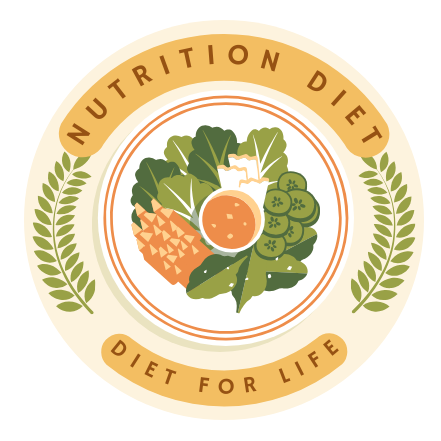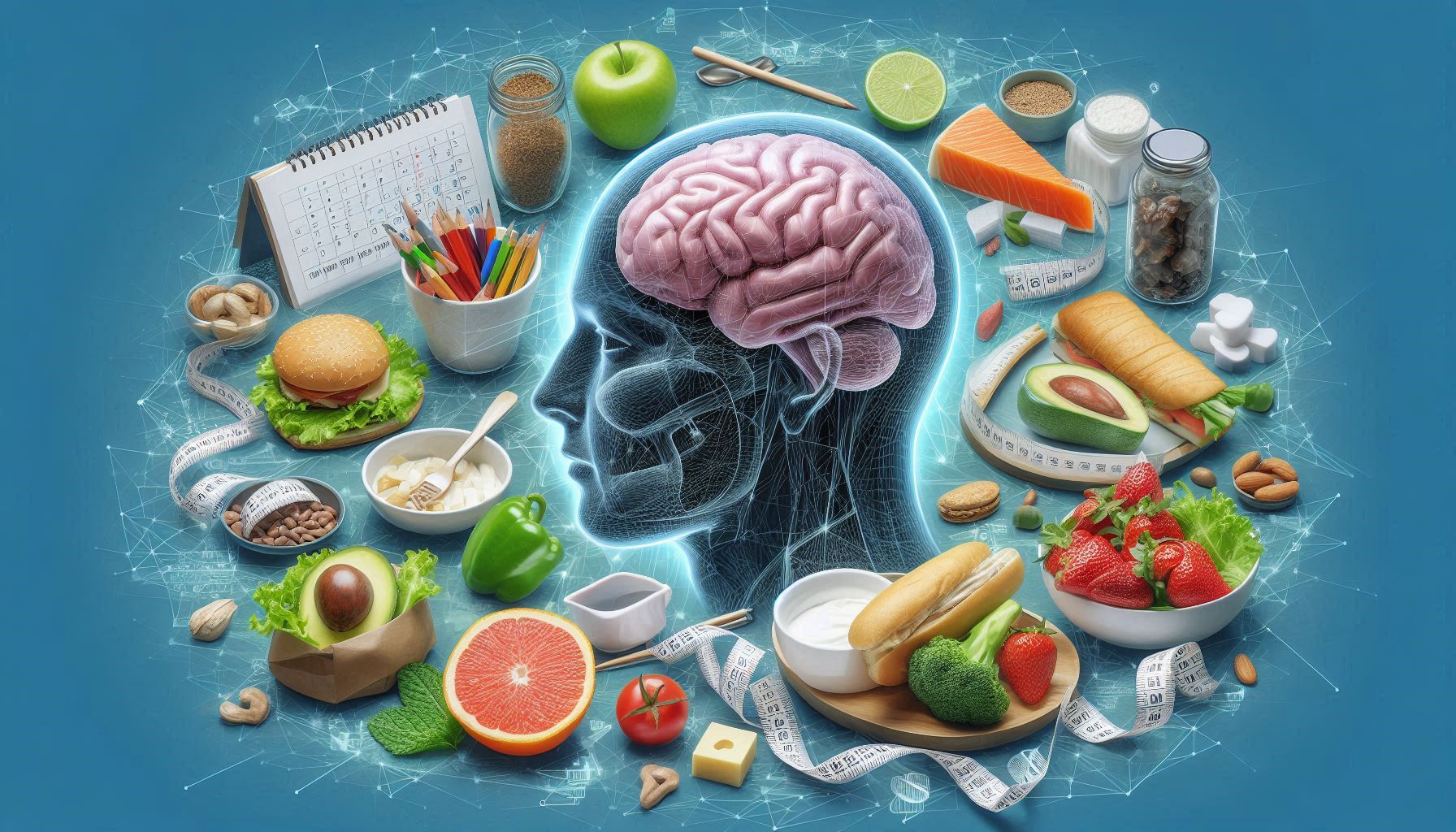Nutrition is essential for maintaining good health, but the ways people fulfill their dietary needs vary widely across cultures. These differences are shaped by a combination of historical, geographical, traditional, religious, and socioeconomic factors, resulting in a rich array of eating practices around the world. The concept of culturally relevant nutrition underscores the need for tailoring dietary guidelines to fit the unique traditions and preferences of different cultural groups. This approach recognizes that food is more than just sustenance; it embodies cultural identity, values, and social connections. Incorporating cultural considerations into nutrition and health programs allows for dietary recommendations that resonate with the people they aim to serve. This increases the likelihood of adherence to dietary changes and promotes better health outcomes. It also helps preserve cultural identity and strengthens the social bonds formed around food, fostering a sense of community and belonging.
Culturally relevant nutrition is especially important for addressing health disparities and promoting health equity. Many standardized nutrition guidelines are based on the dietary habits of specific populations, often neglecting the needs of diverse cultural groups. By adapting nutrition strategies to reflect cultural differences, we can ensure that all communities receive the dietary guidance and support they need, making nutrition education more inclusive and effective. Prioritizing culturally relevant nutrition ultimately helps build long-lasting, healthy eating habits and supports the well-being of individuals and communities. This approach encourages respect for cultural diversity and promotes a more inclusive and equitable future in public health.
Defining Culturally Relevant Nutrition
Culturally relevant nutrition is an approach that customizes nutritional advice, dietary interventions, and health promotion strategies to align with the dietary habits, food preferences, and traditional practices of different cultural groups. Unlike generalized dietary guidelines that may not take cultural context into account, culturally relevant nutrition seeks to honor cultural identities by including familiar foods, respecting food preparation methods, and integrating traditional beliefs about health and diet into nutrition recommendations.
Culturally relevant nutrition can encompass:
- Traditional Ingredients and Foods: Recognizing the staple foods and unique ingredients of different cultural diets and promoting their health benefits.
- Cooking Methods: Adapting modern nutritional recommendations to include traditional methods of preparation that are both familiar and healthful.
- Beliefs and Dietary Practices: Understanding and incorporating religious, spiritual, and cultural beliefs related to food, such as fasting, food taboos, and dietary restrictions.
- Community and Social Context: Recognizing the role of food as a communal activity and a means of cultural expression.
By considering these elements, culturally relevant nutrition not only meets the nutritional needs of individuals but also reinforces their sense of identity, strengthens cultural ties, and encourages better dietary adherence.
The Historical Context of Nutrition and Culture
To understand the importance of culturally relevant nutrition, it’s helpful to look at the historical context of food and health. Throughout history, different civilizations have developed unique diets based on available resources, climate, and agricultural practices. For instance, the Mediterranean diet, with its focus on olive oil, fresh vegetables, fish, and whole grains, developed due to the region’s proximity to the Mediterranean Sea and its abundant natural resources. In contrast, traditional diets in East Asia often incorporate rice, soy products, and a wide range of vegetables, shaped by the climate and agricultural practices in the region.
Colonization, globalization, and modern food production have dramatically altered dietary patterns, introducing new ingredients and processed foods while diminishing traditional food practices. As people moved and societies became more integrated, nutritional guidelines became more standardized, often based on the dietary patterns of Western nations. While these standardized guidelines have made strides in improving general health, they have also contributed to the erosion of cultural food practices and a loss of dietary diversity.
With the migration of people across the globe and the increase in multicultural societies, it has become clear that mainstream nutritional guidance must evolve. The emergence of culturally relevant nutrition as an approach reflects a shift toward personalized dietary advice that takes cultural backgrounds into account.
Why Culturally Relevant Nutrition Matters
The importance of culturally relevant nutrition goes beyond making diets taste better; it plays a critical role in ensuring health equity, promoting public health, and addressing chronic health conditions.
Health Equity
Health equity is the concept that all people should have a fair opportunity to achieve their highest level of health. When dietary guidelines fail to consider cultural differences, they can inadvertently create health disparities. For instance, many standardized dietary recommendations, such as those emphasizing low-carb or high-protein foods, may not align with the food traditions of certain cultural groups. This misalignment can lead to lower adherence rates and, consequently, poorer health outcomes.
Incorporating culturally relevant nutrition into public health initiatives can reduce these disparities. By respecting and integrating traditional food practices into health plans, nutrition programs can reach communities more effectively and promote adherence, leading to improved health outcomes and greater equity in healthcare access.
Improved Dietary Adherence
Research shows that when people are encouraged to follow a diet that aligns with their cultural preferences, they are more likely to adhere to it. For example, studies on Hispanic populations have found that they are more likely to comply with nutrition recommendations that include traditional foods such as beans, rice, and tortillas, rather than those that promote foods they find unfamiliar or culturally insignificant.
Dietary changes are difficult, especially when they involve substituting familiar foods for unfamiliar ones. Culturally relevant nutrition acknowledges these challenges and uses familiar foods and preparation methods to build diets that are both nutritious and culturally appropriate. This method not only helps in achieving sustainable behavior change but also improves patient satisfaction and trust in healthcare providers.
Preserving Cultural Identity and Social Bonds
Food is deeply tied to cultural identity, representing more than just sustenance; it embodies history, values, and shared memories. When nutritional guidelines respect these cultural elements, they help preserve cultural identity. For example, traditional communal meals, which are central to many African, Middle Eastern, and Latin American cultures, play a role in family and community cohesion. When health recommendations align with these traditions, they support rather than disrupt social structures.
A culturally relevant approach also reinforces the value of traditional food practices, which often include healthy cooking methods such as steaming, grilling, or using herbs and spices that provide additional nutrients and health benefits. By valuing these traditional practices, we can encourage better eating habits that are not only healthy but also familiar and comfortable for people.
Barriers to Implementing Culturally Relevant Nutrition
Despite its benefits, culturally relevant nutrition is not without challenges. These barriers must be identified and addressed to ensure that nutrition programs can effectively serve diverse populations.
Insufficient Cultural Competence Among Healthcare Providers
One of the primary barriers is the lack of cultural competence among healthcare professionals. While many dietitians and nutritionists are skilled in the science of nutrition, they may not have an in-depth understanding of cultural beliefs, food practices, and dietary restrictions that are essential for tailoring advice appropriately. This gap can result in recommendations that fail to resonate with diverse groups, reducing the effectiveness of health interventions and making patients feel misunderstood or excluded.
To overcome this, ongoing education and training on cultural competence should be incorporated into medical and nutritional training programs. Healthcare professionals need to learn about the diversity within cultural groups, the types of food people eat, and how to modify nutrition plans to fit cultural preferences.
Challenges in Food Accessibility and Availability
For culturally relevant nutrition programs to succeed, it is essential that individuals have access to the foods recommended in their dietary plans. In many areas, especially those with economically disadvantaged populations, access to culturally appropriate ingredients can be limited. For example, ethnic grocery stores may not be present in all areas, and supermarkets may not stock certain traditional foods.
Public health initiatives can address this issue by partnering with local food suppliers and farmers’ markets to include culturally specific foods. Subsidies and government support can encourage the growth of ethnic food businesses and expand food deserts into areas that are more accessible.
Economic Constraints and Food Insecurity
Economic barriers play a significant role in a person’s ability to eat a healthy, culturally relevant diet. For individuals living in poverty or facing food insecurity, making nutritious food choices can be difficult. Even when culturally relevant foods are available, they may not be affordable, especially if they are imported or locally sourced but priced higher due to low demand.
Policy changes, such as subsidizing specific food types and providing financial assistance for families to buy nutritious foods, can help address these challenges. Additionally, community-led food cooperatives and community-supported agriculture (CSA) programs can help increase access to healthy and culturally familiar foods.
Stereotyping and Oversimplification
Another barrier to culturally relevant nutrition is the risk of stereotyping entire cultures based on generalized beliefs. It is easy to assume that people within a particular culture share identical food habits, but in reality, there is a vast range of dietary preferences even within a single community. For example, while many people from South Asian backgrounds may be vegetarian, others are not, and dietary practices can vary greatly by region, socioeconomic status, and religious beliefs.
Nutrition programs must avoid oversimplified cultural profiles and engage in detailed, inclusive research that considers the diversity within any given community. Including voices from different groups and perspectives ensures that nutrition plans are more representative and effective.
Conflicts with Modern Nutritional Guidelines
Modern nutritional guidelines are often based on data from predominantly Western populations and may not align with cultural eating practices. For instance, the recommendation to limit carbohydrate intake conflicts with many traditional diets in Asia, Africa, and Latin America, where staple foods like rice, maize, and plantains are essential sources of energy.
Nutrition programs need to navigate these potential conflicts carefully. Evidence-based adaptations that respect traditional foods while promoting balanced eating can reconcile modern guidelines with cultural preferences. This may involve incorporating more plant-based proteins, whole grains, and low-fat cooking methods that align with both traditional and modern nutritional principles.
Strategies for Implementing Culturally Relevant Nutrition
To make culturally relevant nutrition a standard part of public health initiatives, several strategies can be adopted.
Cultural Competence Training
Healthcare providers should receive comprehensive training on cultural competence, which involves not just understanding different cultural beliefs but also knowing how to apply that knowledge in a practical setting. Training can include:
- Workshops on cultural foods and preparation methods: Educating providers on popular dishes and traditional preparation techniques that align with different cultures.
- Role-playing scenarios: Simulating patient-provider interactions to improve communication skills and empathy when discussing dietary changes.
- Engagement with community leaders: Partnering with cultural leaders and experts to learn about different perspectives and dietary practices.
Community-Based Approaches
Community-based approaches are crucial for understanding the unique needs of different cultural groups. Strategies include:
- Hosting community meetings and focus groups: Gathering input from community members about their dietary preferences, health goals, and food access.
- Working with community influencers: Collaborating with respected figures within the community, such as religious leaders, educators, or popular chefs, to spread healthy eating messages.
- Offering cooking classes: Teaching families how to make nutritious meals using traditional recipes, modified to improve health outcomes without losing cultural significance.
Partnerships with Local Food Producers
Collaboration with local food producers can help improve access to culturally relevant foods. Public health departments and non-profits can work together to:
- Create ethnic food markets: Organizing markets that feature products from different cultures, making it easier for people to buy familiar ingredients.
- Support community farming initiatives: Encouraging urban gardening and community-supported agriculture programs that grow culturally significant foods.
- Provide distribution channels: Developing food distribution systems that allow community members to access culturally relevant foods more easily and affordably.
Policy Support and Legislative Changes
Governments can play a pivotal role in promoting culturally relevant nutrition by:
- Subsidizing traditional food options: Allocating funding to support the growth of local ethnic food producers and farmers.
- Expanding nutrition assistance programs: Ensuring that food assistance programs offer a variety of culturally appropriate foods.
- Creating grants for nutrition research: Funding studies that investigate the impact of traditional diets on health outcomes and ways to integrate them into modern nutrition.
Case Studies of Culturally Relevant Nutrition in Action
Diabetes Management in Latino Communities
In Latino communities, diabetes rates are notably high, partly due to the high-carbohydrate nature of traditional diets and other socioeconomic factors. Some public health programs have successfully adapted nutrition education to include familiar foods like beans, rice, and tortillas, emphasizing healthier preparation methods like steaming and grilling. These programs promote the use of whole grains, reduce portion sizes, and encourage families to cook at home with lower-fat ingredients.
- The Role of Traditional African Foods: Many African-American and African immigrant communities have strong culinary traditions that emphasize vegetables, legumes, and whole grains. Nutrition programs in these communities have successfully promoted healthy eating by incorporating traditional foods like okra, yams, and collard greens into meal planning. Public health campaigns have highlighted the importance of traditional cooking methods, such as slow-cooking or boiling, which preserve the nutrients in foods.
- Fasting and Religious Considerations in Muslim Communities: Intermittent fasting is an integral part of Islamic practices during Ramadan. Nutritionists have used this practice to teach Muslim communities about balanced eating during fasting periods. This includes emphasizing hydration, consuming complex carbohydrates that provide long-lasting energy, and ensuring meals are rich in protein and fiber to sustain energy levels throughout the day. By aligning nutrition education with fasting practices, healthcare providers can help individuals make healthier food choices during Ramadan and avoid complications related to overeating or dehydration.
Future Directions in Culturally Relevant Nutrition
- Embracing Technology and Innovation: Technology can enhance the reach and effectiveness of culturally relevant nutrition programs. Apps and online platforms can provide culturally tailored recipes, educational videos, and virtual cooking classes. Mobile apps that focus on meal planning and grocery shopping can integrate local and culturally relevant ingredients to make healthy eating easier.
- Interdisciplinary Collaboration: The collaboration between dietitians, public health experts, anthropologists, and community leaders can help create nutrition programs that are comprehensive and culturally sensitive. This interdisciplinary approach ensures that nutrition programs address not just food but also socioeconomic, environmental, and cultural factors affecting diet and health.
- Continuous Feedback and Adaptation: Programs should not be static. Continuous feedback from participants can help refine dietary advice and interventions to better meet the needs of the community. Surveys, focus groups, and feedback forms can be used to gather input from participants and make necessary adjustments to nutrition plans.
Conclusion
Culturally relevant nutrition is crucial for creating dietary interventions that are both effective and sustainable. By incorporating and honoring cultural preferences, food practices, and beliefs, nutrition programs become more meaningful and better tailored to the needs of diverse communities. When dietary recommendations align with individuals’ cultural identities and traditions, they are more likely to be embraced and maintained, leading to improved health outcomes and fostering a stronger sense of community and cultural pride. Integrating culturally relevant approaches into public health initiatives, clinical care, and food policy can help bridge gaps in health equity and address dietary disparities that disproportionately affect certain populations.
Embracing culturally relevant nutrition also supports long-term adherence to healthy eating practices, as it makes dietary changes feel less like a compromise and more like a natural part of everyday life. This approach encourages respect for cultural diversity and promotes food sovereignty by valuing and preserving traditional food systems. As the global community becomes more interconnected and diverse, it is essential to adapt nutrition practices to meet the needs of all people. By prioritizing culturally relevant nutrition, public health strategies and policies can foster greater inclusivity, improve health outcomes, and create a more equitable and nutritious future for all.
SOURCES
Barrera, M., 2008. The role of culture and ethnic identity in health and illness. Health Psychology Review, 2(2), 143-161.
Braveman, P., 2014. Health disparities and health equity: Concepts and measurement. Annual Review of Public Health, 35, 1-18.
Gonzalez, H. M., Tarraf, W., Whitfield, K. E., & Vega, W. A., 2010. The epidemiology of major depression and ethnicity in the United States. Journal of Psychiatric Research, 44(15), 1043-1051.
Kleinman, A., & Benson, P., 2006. Anthropology in public health: Bridging differences in culture and medicine. Annual Review of Anthropology, 35, 205-215.
Lara, M., Gamboa, C., Kahramanian, M. I., Morales, L. S., & Bautista, D. , 2005. Acculturation and Latino health in the United States: A review of the literature and its sociopolitical context. Annual Review of Public Health, 26, 367-397.
Sobal, J., & Stunkard, A. J., 1989. Socioeconomic status and obesity: A review of the literature. Psychological Bulletin, 105(2), 260-275.
Story, M., & Neumark-Sztainer, D., 2002. Adolescent obesity: A crisis in public health. Journal of Adolescent Health, 30(3), 197-209.
Tylor, E. B., 1871. Primitive culture: Researches into the development of mythology, philosophy, religion, art, and custom. London: John Murray.
Wang, Y., & Lobstein, T., 2006. Worldwide trends in childhood overweight and obesity. International Journal of Pediatric Obesity, 1(1), 11-25.
Zenk, S. N., & Schulz, A. J., 2017. The importance of cultural context in nutrition education programs for low-income populations. Journal of Nutrition Education and Behavior, 49(2), 130-138.
HISTORY
Current Version
November 27, 2024
Written By:
SUMMIYAH MAHMOOD




